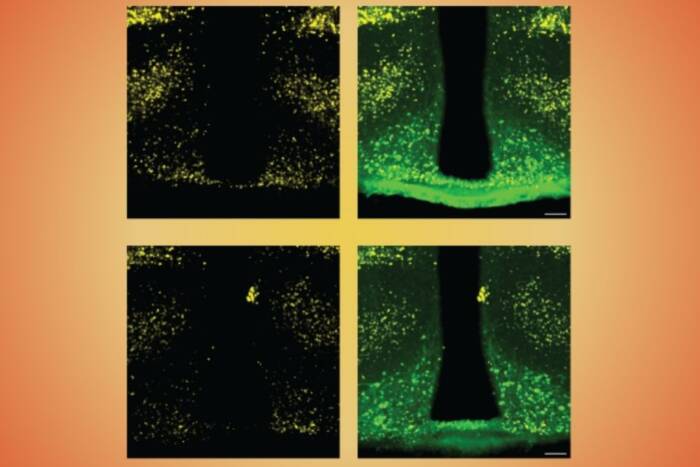Winrich Freiwald, who studies facial processing, is promoted to associate professor

Does this face look familiar? It belongs to neuroscientist Winrich Freiwald, who studies the brain’s ability to process visual cues from faces.
by Wynne Parry, science writer
Winrich Freiwald, a neuroscientist who studies one of the most basic aspects of social interaction—how the brain processes faces—has been promoted to associate professor as of January 1.
Dr. Freiwald, who heads the Laboratory of Neural Systems, works on understanding how a specialized system in the brain responds to the sight of a face and contributes to an individual’s ability to interact with others. He is also using face processing as a model to investigate more generally how the human brain works.
“Based on his rigorous work on face processing and its broad implications, Winrich is widely recognized as a leading investigator in his field,” says Marc Tessier-Lavigne, the university’s president. “His work going forward has the potential to make a profound impact on a number of disciplines within neuroscience, as well as relevance for better understanding psychiatric disorders that involve social processing, such as autism and related conditions.”
A special type of object
“We spend many waking hours thinking about other people, what they are doing and feeling, their intentions, what they think of us,” Dr. Freiwald says. “Many of the conclusions we draw are based on assumptions bolstered by subtle visual cues—primarily from the face. The brain processes responsible provide an entry point to explore fundamental aspects of human nature, such as the function of our social and emotional brains, and the basis for our intelligence.”
Dr. Freiwald received his Ph.D. from Tübingen University in 1998, and then did postdoctoral work at MIT and Harvard. In 2004, he moved to Bremen, Germany, to lead a research group at the Centers for Advanced Imaging and Cognitive Science.
In work published in 2006 and 2008, Dr. Freiwald and his long-time collaborator Doris Tsao, presently a professor of biology at Caltech, identified a network of face areas, which they called face patches, in the brains of rhesus monkeys. Similar areas had been found in the human brain. Dr. Freiwald was appointed assistant professor at Rockefeller in 2009.
He regards the face patch system as a uniquely powerful model to explore how the primate brain recognizes objects. But, he notes, “A face isn’t just any object. It demands special attention, and conveys very potent social and emotional information.”
After Dr. Freiwald arrived at Rockefeller, he began to take advantage of faces’ unique significance to the human brain. He now uses face processing as a model to investigate how the brain couples visual perception to memory, attention, emotion, and communication.
Discovering and exploring new brain systems
The specialized circuitry of the face patch system provides an entry point from which to study the neural basis for intelligence. “Predicting what other people will do, arguably, is the greatest challenge for the human mind,” Dr. Freiwald says. “And it solves this challenge, successfully, with very minimal clues from the face. How is that even possible?”
What the human brain lacks in sheer data-processing power, he notes, it more than makes up for through a different type of intelligence. Instead of crunching large sets of numbers, the human brain constructs rich models of the world to make deep inferences about it. For instance, facial recognition may require the brain to alter its internal model of a face to match what the eyes see.
Face processing is a case in point because when we look at another person, we make implicit assumptions to draw conclusions necessary for social interaction. For instance, nearly all social interactions are based on the premise that the other person has thoughts and mental states, and that these may differ from our own.
Work in Dr. Freiwald’s lab has so far uncovered, among other things, how the face-processing system integrates facial forms and motion, as well as information from the body, and identified a specific brain area involved in the control of attention, as well as several areas in charge of facial movements, crucial to emotional expression.
In one ongoing project, Dr. Freiwald’s lab is collaborating with computational neuroscientists to construct a computer model that recognizes faces just as the primate brain does, on the notion that if this process can be successfully mimicked, then its computational principles are understood.
“A lot of the work we have done in the last few years has revealed new systems for complex brain functions, which are linked to face processing,” Dr. Freiwald says. “Moving forward, we are examining how they work and how their malfunctioning might explain conditions like face blindness or autism.”


